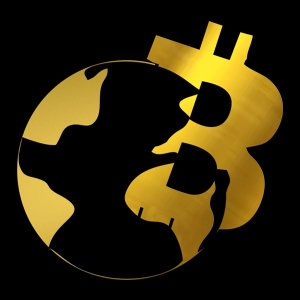


Octavia AI PreisVIA
VIA zu EUR Umrechner
Wie denken Sie heute über Octavia AI?
Über Octavia AI (VIA)
Was ist Octavia?
Octavia ist ein Web3 Krypto-KI-Assistent, der auf die wachsenden Bedürfnisse der Krypto-Community zugeschnitten ist. Mit seiner tief im Kryptowissen verwurzelten Grundlage, dem direkten Zugang zu On-Chain-Informationen und der nahtlosen Internetanbindung wird Octavia zu einer zentralen Ressource für Forschung, Trading und eine Vielzahl anderer kryptobezogener Aufgaben. Seine einzigartige Fähigkeit, sich sowohl mit dem Internet als auch mit der Blockchain zu verbinden, ermöglicht es ihm, eine breite Palette von Funktionen auszuführen, von der Durchführung eingehender Recherchen und dem Zugriff auf Webressourcen bis hin zur Analyse von Blockchain-Transaktionen und der Bereitstellung personalisierter Unterstützung auf der Grundlage der Nutzerpräferenzen.
Der Kern der Funktionalität von Octavia liegt in seinen ausgefeilten KI-Fähigkeiten, die durch ein eingebautes Speichersystem ergänzt werden. Dieses System ermöglicht es Octavia nicht nur, zu lernen und sich im Laufe der Zeit an die individuellen Vorlieben der Nutzer anzupassen, sondern gewährleistet auch eine immer individuellere und effizientere Unterstützung. Ob über Discord, Telegram oder andere Plattformen, Octavia erkennt und authentifiziert die Nutzer und sorgt für eine sichere und intuitive Interaktion. Das auf die Blockchain zugeschnittene Design ermöglicht den Nutzern außerdem detaillierte Analysen von Transaktionen in einfacher Sprache und entmystifiziert so die oft komplexen Daten, die mit Blockchain-Operationen verbunden sind. Mit Funktionen wie Internetzugang, präzisen Berechnungen und einem Gedächtnis, das sich mit jeder Interaktion verbessert, wird Octavia als lebendiger KI-Assistent positioniert, der die Art und Weise, wie Nutzer mit dem Krypto-Bereich interagieren, revolutioniert.
Ressourcen
Offizielle Dokumente: https://docs.oasys.games/
Offizielle Website: https://octavia.one/
Wie funktioniert Octavia?
Im Kern nutzt Octavia eine ausgeklügelte Mischung aus KI-Technologien und Blockchain-Integration, um ein nahtloses und intuitives Nutzererlebnis zu bieten. Wenn eine Nachricht eingeht, wertet Octavia sie aus und entscheidet, wie sie am besten vorgeht. Bei einfachen Anfragen kann sie auf der Grundlage ihres großen Wissensschatzes sofort Antworten geben. Bei komplexeren Anfragen führt Octavia jedoch einen menschenähnlichen Rechercheprozess durch, indem es Suchmaschinen nutzt, um relevante Informationen zu sammeln, Websites zu besuchen und Inhalte zu verstehen, um genaue und umfassende Antworten zu liefern. Dieser Prozess kann bei Bedarf wiederholt werden, um sicherzustellen, dass die bereitgestellten Informationen den hohen Standards von Octavia hinsichtlich Genauigkeit und Relevanz entsprechen.
Die Integration von Octavia in die Blockchain-Technologie ermöglicht es außerdem, Echtzeitdaten direkt aus der Blockchain abzurufen. Diese Funktion stellt sicher, dass die Nutzer die aktuellsten Informationen über Token, Wallets und Verträge erhalten. Octavias Gedächtnissystem, das dem menschlichen Gedächtnis nachempfunden ist, umfasst einen lokalen, einen globalen und einen festen Speicher, der es ihm ermöglicht, Informationen aus Nutzerinteraktionen zu speichern, aus neuen Entdeckungen zu lernen und sein Kernwissen und seine Persönlichkeit zu erhalten. Dieses fortschrittliche Gedächtnissystem ermöglicht es Octavia, individuelle Unterstützung zu bieten, so dass das Erlebnis jedes Nutzers einzigartig und auf seine spezifischen Bedürfnisse und Vorlieben zugeschnitten ist.
Was ist der VIA Token?
VIA ist der native Utility-Token der Octavia-Plattform. Es dient mehreren Zwecken, einschließlich des Einsatzes, der Verwaltung, des Zugangs zu Premium-Funktionen und der Teilnahme an der einzigartigen „Train-to-Earn“-Aktion. Durch das Staken von VIA-Tokens können Nutzer Prämien verdienen. Der Token gewährt auch Zugang zu fortgeschrittenen Funktionen, die das Nutzererlebnis u. a. durch automatisiertes Trading und private Modi verbessern. Im Rahmen der Governance haben die Inhaber von VIA-Token ein Mitspracherecht bei der Entwicklung der Plattform, so dass die Community Änderungen vorschlagen und darüber abstimmen kann. Schließlich belohnt das Train-to-Earn-Konzept die Nutzer für ihre Beiträge zur Verbesserung der KI von Octavia und fördert so ein kollaboratives Umfeld, in dem alle vom Wachstum und der Weiterentwicklung der Plattform profitieren. VIA verfügt über ein Gesamtangebot von 100 Millionen Tokens.
Was bestimmt den Preis von Octavia?
Der Preis des Octavia-Tokens (VIA) wird, wie jedes Assets auf dem Blockchain- und Kryptowährungsmarkt, grundlegend von den Prinzipien von Angebot und Nachfrage beeinflusst. Zu den Faktoren, die Angebot und Nachfrage nach VIA beeinflussen, gehören die neuesten Nachrichten im Web3-Bereich, Kryptowährungstrends und die allgemeine Stimmung gegenüber der Einführung und Regulierung von Kryptowährungen. Da Investoren und Nutzer die Charts der Kryptowährungen und die Preisvorhersagen von Octavia genau im Auge behalten, spiegeln sich Veränderungen in der Marktdynamik oft in den Preisen wider. Die Integration von Octavia in das Web3-Ökosystem und seine Nützlichkeit bei der Bereitstellung fortschrittlicher Blockchain-basierter Lösungen machen es zu einem potenziell lukrativen Krypto-Investment für 2024 und darüber hinaus. Allerdings können Marktvolatilität, Sicherheitsbedenken und die sich ständig weiterentwickelnde Landschaft der Kryptowährungsregulierung ihre Bewertung erheblich beeinflussen.
Darüber hinaus wird der Preis von Octavia auch von den technologischen Fortschritten, den Sicherheitsmaßnahmen und dem Grad der Akzeptanz von Kryptowährungen durch die Nutzer beeinflusst. Mit der Einführung neuer Funktionen und Verbesserungen der Plattform können diese jüngsten Entwicklungen das Interesse und die Nachfrage anregen und die Marktposition von Octavia beeinflussen. Die Analyse von Kryptowährungen, einschließlich eines tiefen Einblicks in die Leistung und das Potenzial von Octavia, spielt eine entscheidende Rolle für Investoren, die fundierte Entscheidungen treffen wollen. Auch wenn hohe Renditen versprochen werden, ist es wichtig, die Risiken von Kryptowährungen, einschließlich Marktvolatilität und Sicherheitsbedenken, zu berücksichtigen, bevor man sich auf die beste Krypto-Investition für 2024 und darüber hinaus einlässt. Die neuesten Nachrichten und Entwicklungen innerhalb des Octavia-Ökosystems und des breiteren Kryptowährungsmarktes zu verfolgen, wird für diejenigen, die in die Komplexität von Investitionen in digitale Vermögenswerte einsteigen wollen, entscheidend sein.
Wer sich für eine Investition oder das Trading mit Octavia interessiert, könnte sich fragen: Wo kann man VIA kaufen? Sie können VIA an führenden Börsen wie Bitget kaufen, die eine sichere und nutzerfreundliche Plattform für Krypto-Enthusiasten bieten.
AI-Analysebericht über Octavia AI
Live Octavia AI Preis heute in EUR
Octavia AI Preisverlauf (EUR)
 Niedrigster Preis
Niedrigster Preis Höchster Preis
Höchster Preis 
Was ist der höchste Preis von Octavia AI?
Was ist der niedrigste Preis von Octavia AI?
Octavia AI Preisvorhersage
Wie hoch wird der Preis von VIA in 2026 sein?
Wie hoch wird der Preis von VIA in 2031 sein?
FAQ
Wie hoch ist der aktuelle Preis von Octavia AI?
Wie hoch ist das 24-Stunden-Trading-Volumen von Octavia AI?
Was ist das Allzeithoch von Octavia AI?
Kann ich Octavia AI auf Bitget kaufen?
Kann ich mit Investitionen in Octavia AI ein regelmäßiges Einkommen erzielen?
Wo kann ich Octavia AI mit der niedrigsten Gebühr kaufen?
Octavia AI Bestände nach Konzentration
Octavia AI Adressen nach Haltezeit

Globale Octavia AI Preise
- 1
- 2
- 3
- 4
- 5
Wie man Octavia AI(VIA) kauft

Erstellen Sie Ihr kostenloses Bitget-Konto

Verifizieren Sie Ihr Konto

Octavia AI in VIA konvertieren
VIA-Perpetual-Futures traden
Nachdem Sie sich erfolgreich bei Bitget angemeldet und USDT oder VIA Token gekauft haben, können Sie mit dem Trading von Derivaten beginnen, einschließlich VIA Futures und Margin-Trading, um Ihr Einkommen zu erhöhen.
Der aktuelle Preis von VIA ist €0.02514, mit einer 24h-Preisänderung von +1.17%. Trader können von Futures profitieren, indem sie entweder Long- oder Short-Positionen eingehen.
Schließen Sie sich VIA Copy-Trading an, indem Sie Elite-Tradern folgen.
Neue Listings auf Bitget
Mehr kaufen
Wo kann ich Octavia AI (VIA) kaufen?
Videobereich - schnelle Verifizierung, schnelles Trading

VIA zu EUR Umrechner
Octavia AI Bewertungen
Bitget Insights





Verwandte Assets
Zusätzliche Informationen über Octavia AI
Coin-Übersicht
Coin bezogen
Trading bezogen
Traden
Earn
BTC/USDT
SpotBTC/USDT
MarginBTC/USDT
USDT-M FuturesBTC/USD
Coin-M Futures































